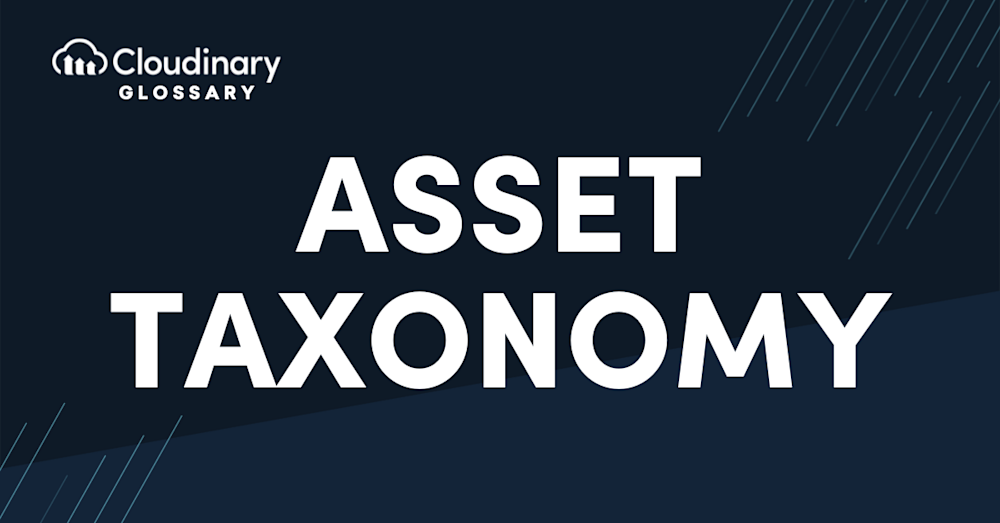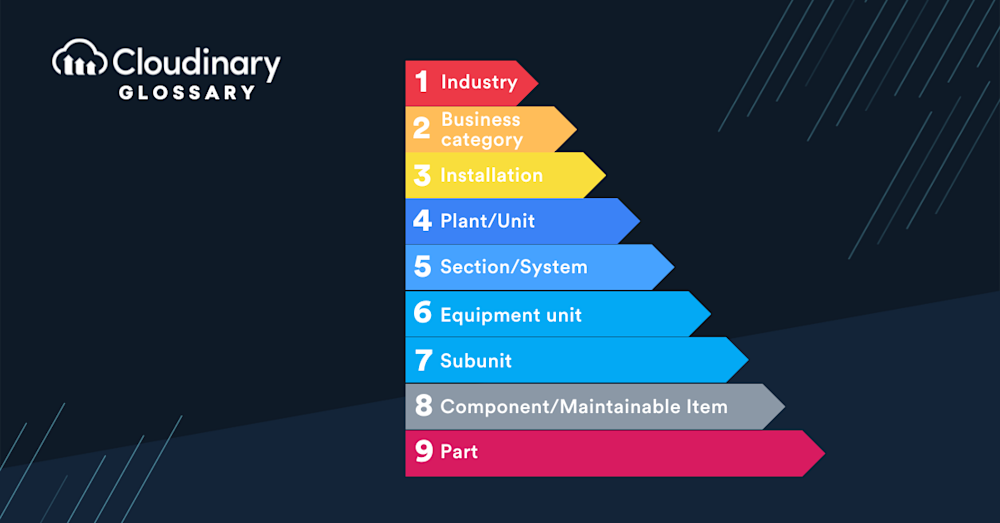An asset taxonomy is a hierarchical categorization of an organization’s assets. More specifically, it allows an organization to categorize its digital assets in groups with shared attributes, like how scientists assign animals to specific trees (which is where taxonomy comes from).
While most discussions focus on digital assets—such as images, videos, and documents—an asset taxonomy can also be applied to physical assets, like hardware or machinery, depending on the context. This makes it a versatile tool in areas ranging from digital asset management (DAM) to IT asset management and even condition monitoring for maintenance workflows.
It allows you to organize your data into groups based on attributes such as industry and type, making it easier for your team members to find the information they need quickly. An asset taxonomy should be based on business needs, so if you’re looking for an effective way of organizing your company’s data, consider creating an asset taxonomy.
Some organizations prefer a flat taxonomy — where assets can belong to multiple categories without being duplicated — instead of a traditional folder-based (nested) structure. Cloudinary supports both approaches. This flexibility makes it easier for teams to browse and find what they need without memorizing folder paths or filenames.
Why Is Digital Asset Taxonomy Important?
A taxonomy is an organized structure of terms that helps you find what you need. It will help you find the right assets for the job and determine if an asset is available.
This structure becomes especially valuable in larger organizations where inconsistent naming conventions, outdated files, or duplicated content slow down workflows. A strong taxonomy enforces consistent categorization, meaning everyone refers to assets using the same terms and logic—eliminating ambiguity and guesswork.
A robust taxonomy ensures everyone understands how each term relates to its broader parent category. So, for example, you need images of instruments for a project. With proper asset taxonomy, you can search through your organization’s media to find pictures. Without it, you’ll have to manually search for the images you need, which can be almost impossible for larger companies.
Cloudinary’s search capabilities are enhanced through metadata, tags, and AI-powered auto-tagging, helping you surface the right content quickly — even if you don’t know the filename or where it’s stored. This means you can search based on descriptions, use cases, or even regions and still get precise results.
Metadata plays a critical role here. Think of metadata as “data about data”—such as file type, creator, campaign, usage rights, or even condition status. By attaching this kind of descriptive information to each asset, your taxonomy becomes searchable, filterable, and actionable.
Why Should You Care about Asset Taxonomy in Your Company
Asset taxonomy is a tool that helps you find the right assets, people, and information. Let’s look at how an asset taxonomy can be used in your company:
- Finding the right assets. When you know what you’re looking for, it’s much easier to find it! With an organized system of classifying your company’s assets, employees can quickly locate what they need without having to search through piles of files on their desktops or dig through endless folders in network folders.
- Finding the right people who can use those assets effectively. An organized system also makes it easy for employees who don’t have access rights to certain items to request them from those who do have access rights (for example, if an employee needs help creating something new but doesn’t have permission from IT). This increases efficiency by ensuring everyone knows exactly where everything is located, so no time is wasted searching around aimlessly trying to figure out where things are stored. Asset taxonomy also supports better decision-making. With a clear structure that reflects your business’s needs—whether by product line, market region, or campaign—it becomes easier to understand what assets exist, how they’re used, and where there may be gaps. These insights help teams allocate resources, prioritize projects, and reduce duplication of effort.
- To get the most out of your taxonomy, start by auditing your current storage structure — look for outdated files, duplicates, and disorganized folders. From there, build your taxonomy around how different teams actually search for content. Cloudinary lets you create custom metadata fields and use AI-based tagging to improve discoverability across departments.
Asset Taxonomy and Cloudinary
An asset taxonomy is a way to organize your company’s assets. It helps you find the correct information when you need it and saves time when creating new content or updating existing pages on your website. An asset taxonomy can be created in many different ways, but it should always have the same goal: ensuring everyone knows what an asset is before starting one.
If you’re building a taxonomy from scratch, start by identifying the core categories relevant to your organization—whether by asset type (images, videos, documents), department, or use case. Layer in metadata to describe each asset’s properties and build a naming convention that scales. Cloudinary’s platform supports this natively, whether your structure is hierarchical or flat.
With Cloudinary, many enterprise brands (especially those looking for a Scene7 alternative) can effortlessly migrate millions of assets along with the taxonomy and folder structure to Cloudinary, optimizing the assets and improving performance while saving costs.
During migration, Cloudinary’s support team can help you refine your taxonomy and metadata structure to match how your teams work. Whether you’re organizing by product line, campaign, or region, Cloudinary enables flexible asset mapping that scales as your library grows.
What are you waiting for? Get started with Cloudinary with a free account and unlock your media’s true potential.
Additional Resources You May Find Useful:



